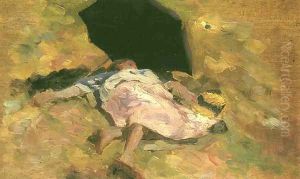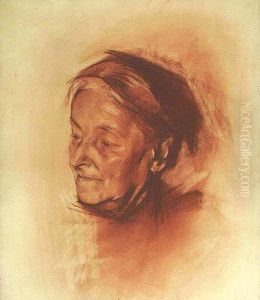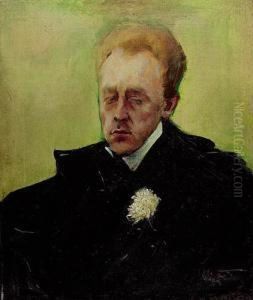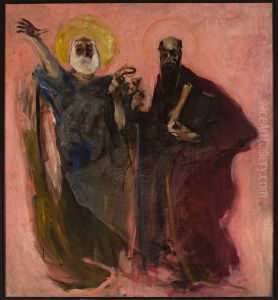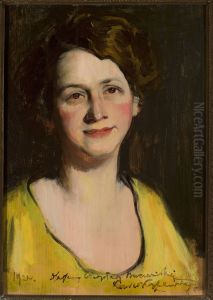Konrad Krzyzanowski Paintings
Konrad Krzyzanowski was a Polish painter known for his significant contributions to the art world during the late 19th and early 20th centuries. Born on November 11, 1872, in Warsaw, which at the time was part of the Russian Empire, Krzyzanowski showed an early aptitude for the arts. He pursued his passion by studying at the Warsaw School of Fine Arts and later at the esteemed St. Petersburg Academy of Arts, where he honed his skills under the tutelage of prominent artists of the era.
Krzyzanowski's style evolved over the years, initially influenced by the Symbolist movement, which was prevalent during his early career. He was deeply interested in the emotional and spiritual aspects of human experience, which is reflected in his early works. However, he soon transitioned towards a more modernist approach, experimenting with light and color in innovative ways that prefigured later developments in European art.
After completing his education, Krzyzanowski traveled extensively, living and working in various European cities, including Munich and Paris, where he was exposed to a range of artistic movements and styles. His time in Paris was particularly influential, as he came into contact with the burgeoning avant-garde scene, and his work began to exhibit elements of Post-Impressionism and Expressionism.
Throughout his career, Krzyzanowski remained dedicated to exploring the possibilities of painting, and his later works are characterized by a dynamic use of color and a bold, expressive brushwork that conveyed the emotional intensity of his subjects. Despite facing financial difficulties and health issues, he continued to create art that pushed the boundaries of traditional Polish painting.
Krzyzanowski's contributions to Polish art were cut short by his untimely death on October 25, 1922, in Warsaw. Although his life was relatively brief, his artistic legacy has endured, and he is celebrated as a pioneer of modern Polish painting, whose work continues to inspire and influence artists and art lovers alike.
